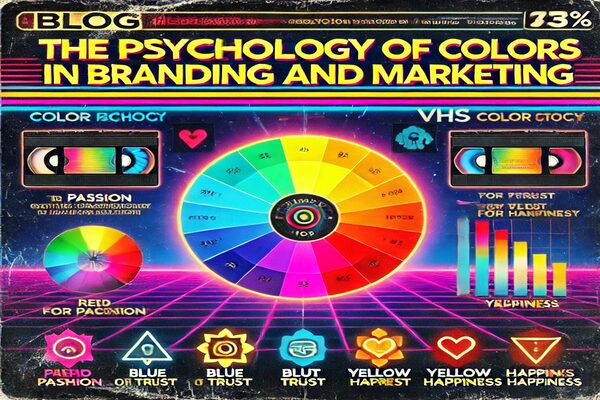
The Psychology of Colors in Branding and Marketing
- Graphic Designer Tips
- branding, color psychology, marketing design, The Psychology of Colors in Branding and Marketing, visual communication
- February 12, 2025
The Psychology of Colors in Branding and Marketing

The Psychology of Colors
The Psychology of Colors in Branding and Marketing
Color plays a crucial role in branding and marketing. It’s not just about aesthetics; colors evoke emotions, shape perceptions, and influence consumer behavior. The right color choices can make a brand instantly recognizable and trigger subconscious associations that drive purchasing decisions.
How Colors Impact Branding
Brands use colors strategically to establish identity, communicate values, and create emotional connections. Think of some of the world’s most famous brands—Coca-Cola’s bold red, Facebook’s trustworthy blue, or McDonald’s energetic yellow and red combination. These colors weren’t chosen randomly; they are based on psychological principles that influence how customers feel about a brand.
The Meaning Behind Colors in Marketing
Each color has psychological associations that can affect consumer perception:
- Red – Energy, passion, urgency. Often used in sales, food industries, and impulse purchases (e.g., Coca-Cola, Target, YouTube).
- Blue – Trust, reliability, professionalism. Common in tech and financial industries (e.g., Facebook, IBM, PayPal).
- Yellow – Optimism, happiness, warmth. Used to attract attention and evoke friendliness (e.g., McDonald’s, IKEA, Best Buy).
- Green – Growth, health, nature. Popular among eco-friendly brands and wellness industries (e.g., Whole Foods, Starbucks, Animal Planet).
- Orange – Enthusiasm, creativity, excitement. Often associated with affordability and fun (e.g., Nickelodeon, Fanta, Amazon).
- Purple – Luxury, creativity, royalty. Used by high-end brands and beauty products (e.g., Cadbury, Hallmark, Yahoo!).
- Black – Elegance, sophistication, power. Frequently used in luxury branding (e.g., Chanel, Apple, Nike).
- White – Simplicity, purity, cleanliness. Found in minimalist and medical branding (e.g., Apple, Tesla, The North Face).
Retro Aesthetic in Branding and Color Psychology
Retro branding is making a major comeback, with vibrant neon hues, nostalgic pastel palettes, and vintage-inspired typography becoming more prominent. Many brands are embracing 80s and 90s aesthetics, using bright, electrifying colors reminiscent of old-school arcade games, VHS tapes, and neon signs.
For example, brands targeting millennials and Gen Z audiences often incorporate bold pinks, electric blues, and neon greens to evoke a sense of nostalgia while keeping designs fresh and modern. The psychology behind this trend is clear: familiar colors create emotional connections and bring back positive memories, making the brand feel more relatable and engaging.
Choosing the Right Colors for Your Brand
When selecting colors for branding, consider the following factors:
- Target Audience – Different demographics respond to colors differently. Younger audiences may prefer bold and vibrant colors, while professional audiences might lean toward neutral and subdued tones.
- Industry Standards – Look at competitors and identify color trends. While differentiation is important, industry-specific colors create instant recognition.
- Emotional Impact – What feelings do you want to evoke? Do you want your brand to feel exciting, calming, luxurious, or innovative?
- Contrast and Readability – High-contrast colors improve visibility and accessibility, especially in digital marketing.
Final Thoughts
Color psychology is a powerful tool in branding and marketing. Whether using retro-inspired palettes or traditional branding hues, the right colors can shape brand perception, build emotional connections, and influence buying behavior. By understanding color meanings and trends, brands can craft compelling visual identities that resonate with their audience and stand the test of time.
#ColorTheory #Branding #GraphicDesign #MarketingDesign
Leave Your Comment Here
You must be logged in to post a comment.




